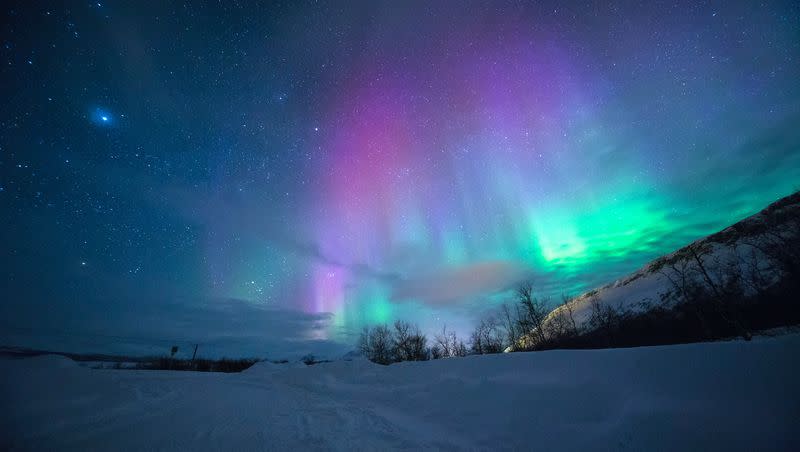2024 will be one of the best years for the northern lights. Here’s where to see them

2024 is promising to bring the most spectacular northern lights shows the world has seen in two decades. So if you don’t already have plans to see them, you may want to start thinking about it.
According to National Geographic, the sun has an 11-year cycle, and solar activity will peak this year and increase the visibility of the northern lights. The last time the sun hit its maximum in the cycle was 2014, which had the weakest solar activity in a century. That means if this year’s northern lights meet expectations, they’ll be the best of the past two decades and will be unmatched for another decade.
They will also likely be visible much farther south than normal, meaning you may not even need a special trip to catch a glimpse of the lights. Here’s everything you need to know about what the northern lights are and how to see them.
What are the northern lights?
The northern lights, also known as aurora borealis, are a phenomenon that create flashes of colorful, dancing light across the night sky in the Northern Hemisphere. They are caused by the interactions between solar activity and Earth’s magnetic fields, according to the Library of Congress. A similar effect occurs in the Southern Hemisphere and is called aurora australis.
The aurora borealis isn’t the only astronomical phenomenon to hit the skies in 2024 — there will also be a total solar eclipse over parts of eastern North America in April.
Related
Best time of year to see the northern lights
According to National Geographic, auroras occur more frequently around the spring and autumnal equinoxes, which will occur in late March and September. However, they can occur throughout the year, and you can track their progress and see forecasts on aurora-tracking websites such as the National Oceanic and Atmospheric Administration’s Aurora Dashboard and the University of Alaska’s Aurora Forecast and apps like Aurora Alerts.
Moon cycles may also have a slight impact on an aurora’s visibility. Vincent Ledvina, the self-proclaimed “Aurora Guy,” recommends planning a trip to see the lights during a first- or third-quarter moon because it provides enough light to see without overpowering the northern lights.
Best places to see the northern lights
Because magnetic activity is focused around Earth’s poles, auroras are best visible the closer you get to the pole. This region around the pole is called the “auroral oval,” and it is constantly changing, per National Geographic. With this year’s additional solar activity, the auroral oval is expected to grow.
Don Hampton, research associate professor at the Geophysical Institute of the University of Alaska Fairbanks, told National Geographic that he thinks it’s very possible that the aurora borealis will be visible as far south as the Midwest and lower Midwest, or 40th parallel, which runs through Provo, Utah.
However, that prediction isn’t a given. If you really want to be sure to see the northern lights this year, the following cities are well within the auroral zone even in regular years and are known hotspots for viewing the northern lights:
Fairbanks, Alaska.
Churchill, Manitoba, Canada.
Yellowknife, Northwest Territories, Canada.
Reykjavík, Iceland.
Tromsø, Norway.
Abisko, Sweden.
Rovaniemi, Finland.

